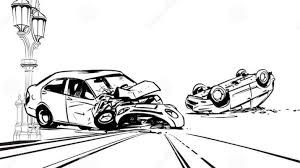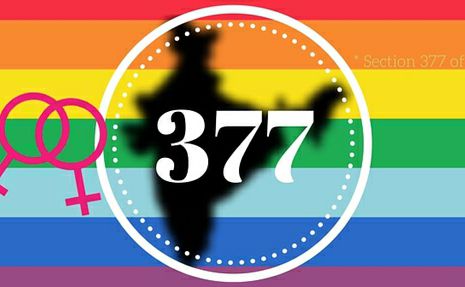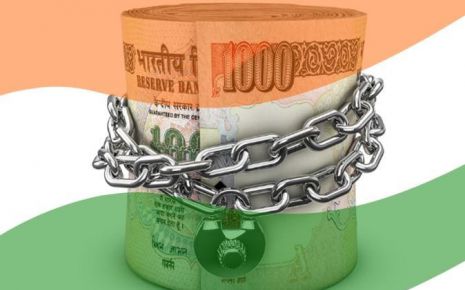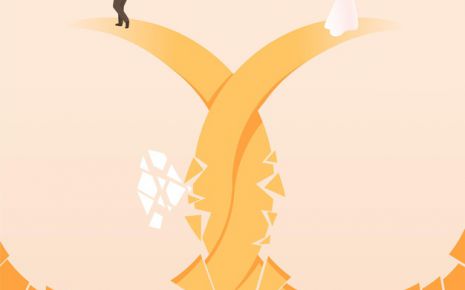Dowry Death: How an Ancient Tradition Became a Modern Crisis
Marriage is often viewed as a civilised social structure where two individuals
commit themselves to institutional norms and values, forming a strong bond to
uphold and maintain marital responsibilities. This institution serves as a
cornerstone for the continuation of the human race. Despite the promises made
during marriage ceremonies to overcome individual incompatibilities and
differences, certain issues, such as dowry demands, have arisen, leading to
severe consequences.
Dowry is the transfer of parental property or wealth when a daughter marries. It typically involves the bride's family giving monetary or material gifts to the groom's family. These gifts can include cash, jewellery, electrical appliances, furniture, crockery, kitchenware, cars, and other household items to help the newlyweds start their life together. The practice of dowry is ancient, potentially predating recorded history. It remains prevalent in many parts of the world, especially in Asia and North Africa, where it can be a condition for marriage. If the dowry is not met, marriages may be annulled.
In India, the dowry system has become deeply entrenched in society, creating significant challenges for reformers and legislators. Originally, dowry was not associated with greed or extortion. It was intended as a token of love and respect for the groom. In Hindu traditions, Varadakshina, a voluntary offering recorded in the Shastras, was necessary for the virtuous act of Kanyadaan (the giving away of the bride) to be complete. However, the practice has deteriorated over time into a mechanism for financial exploitation and oppression.
The societal impact of dowry demands has been profound and devastating. Dowry-related violence, including dowry deaths, murder-suicides, and bride burning, highlights a severe social malady. Married women often face bullying, humiliation, assault, and coercion to commit suicide. Many are even burned to death because their parents cannot meet dowry demands.
Historically, dowries were intended to provide security for the bride and ensure her financial stability in her new home. In many cultures, they symbolized the union of two families and were given in good faith. However, the noble intentions behind the dowry have been corrupted over time, leading to the current crisis.
The modern manifestation of dowry has turned into a pernicious and coercive system. It has evolved from a gesture of goodwill into a form of extortion, placing immense pressure on the bride's family. The societal expectation of dowry has become so ingrained that families feel compelled to comply, even if it means incurring significant financial burdens or going into debt.
One of the most alarming consequences of the dowry system is the rise in dowry-related violence. Women who are unable to meet dowry demands often face severe abuse from their husbands and in-laws. This abuse can take various forms, including physical violence, emotional harassment, and social ostracism. In extreme cases, women are driven to commit suicide or are murdered by their in-laws in what are often termed "dowry deaths."
Dowry deaths occur when a bride is killed or driven to suicide due to continuous harassment and abuse related to dowry demands. These deaths are often disguised as accidents or suicides, making it difficult to hold the perpetrators accountable. Bride burning, a particularly heinous form of dowry death, involves setting the bride on fire, often under the guise of a kitchen accident. These horrific acts are symptomatic of a broader issue of gender-based violence and discrimination.
The dowry system also perpetuates a cycle of inequality and gender bias. It reinforces the notion that women are financial burdens to be offloaded onto another family, thereby devaluing their contributions and worth. This perception undermines women's rights and perpetuates a culture of discrimination and violence against women. Efforts to combat the dowry system have faced significant challenges. While laws exist in many countries to prohibit dowry and punish those who demand it, enforcement is often weak. Social and cultural norms continue to uphold the practice, making it difficult for individuals to speak out against it. Victims of dowry harassment often fear retribution or social stigma, further complicating efforts to address the issue.
Activists and reformers have been working tirelessly to raise awareness about the dangers of the dowry system and advocate for stronger legal protections. Education and economic empowerment of women are seen as crucial steps towards breaking the cycle of dowry-related violence. By providing women with greater financial independence and opportunities, they can be less vulnerable to exploitation and abuse. Community-based initiatives and grassroots movements have also played a vital role in challenging the dowry system. These efforts focus on changing societal attitudes and promoting gender equality. By fostering a culture of respect and equality, communities can work towards eradicating the practice of dowry and its associated harms.
The role of men in combating the dowry system cannot be overlooked. Men must take an active stand against dowry demands and support efforts to promote gender equality. By rejecting dowry and advocating for fair and respectful treatment of women, men can help dismantle the entrenched norms that sustain the practice. The dowry system represents a significant social challenge with far-reaching consequences.
Originally intended as a gesture of goodwill, dowry has evolved into a form of financial exploitation and a source of severe gender-based violence. Efforts to combat this practice must involve a multifaceted approach, including legal reforms, education, economic empowerment, and cultural change. By addressing the root causes of dowry and promoting gender equality, society can work towards eliminating this harmful practice and ensuring the safety and dignity of all individuals in the marital relationship.
Despite significant legislative efforts to prevent dowry-related crimes through modifications in Indian criminal law, these measures have been widely criticized as ineffective. Although the laws provide extensive powers, enforcement by the police and courts is inefficient. Women and their families often struggle to prove their cases beyond a reasonable doubt, leading to prolonged court proceedings and frequent acquittals for the accused, even in murder cases. In the case of Preeti Gupta & anr. v. State of Jharkhand & anr., Section 498-A was challenged, and the Supreme Court expressed concern over the potential misuse of anti-dowry legislation, recommending a thorough review and investigation.
Furthermore, it's crucial to note that while Section 113-B shifts the burden of proof onto the accused, it does not relieve the prosecution of its duty to present substantial evidence supporting the allegations of cruelty and harassment. The presumption is rebuttable, and the accused can still present evidence to counter the presumption of guilt.
Moreover, the courts have emphasized the need for meticulous examination of the evidence to ensure justice is served. In dowry death cases, where emotions run high and societal pressures are significant, it's imperative for the judiciary to meticulously evaluate the evidence presented and apply the law impartially to prevent miscarriages of justice. Section 113-B of the Indian Evidence Act provides a legal presumption regarding dowry deaths, shifting the burden of proof onto the accused.
However, this presumption is not absolute and can be rebutted with sufficient evidence to the contrary. The judiciary plays a crucial role in ensuring that justice is served by meticulously examining the evidence presented and upholding the principles of fairness and impartiality in legal proceedings.
Drawbacks In The System
The issue of dowry deaths in India is a complex and deeply entrenched societal problem that has persisted despite legal interventions. While there are laws in place to address dowry-related crimes, there are significant loopholes and challenges within the Indian legal system that hinder effective prosecution and prevention of dowry deaths. These loopholes contribute to a culture of impunity, where perpetrators often escape justice, perpetuating the cycle of violence against women.
Conclusion
In summary, the persistent occurrence of dowry deaths in India highlights the intricate challenges within the legal system, society, and culture that hinder effective prosecution and prevention of violence against women. Despite legislative efforts, significant loopholes impede justice and perpetuate impunity.
A primary hurdle is the difficulty in gathering evidence and establishing guilt beyond a reasonable doubt, exacerbated by dowry deaths often happening within the privacy of homes. Furthermore, these deaths are frequently disguised as accidents or suicides, complicating investigations and resulting in lenient sentences for perpetrators.
Out-of-court settlements further shield perpetrators from accountability, perpetuating a cycle of violence. Additionally, the legal process poses challenges for vulnerable victims and their families, placing a heavy burden on prosecution and demanding substantial evidence. Despite these obstacles, hope lies in comprehensive reforms and collaborative efforts.
Strengthening the legal framework, providing robust support for victims, and fostering gender equality are pivotal steps. Addressing root causes, such as poverty and patriarchal attitudes, through awareness, education, and empowerment, is essential for progress. In essence, eradicating dowry deaths requires a collective commitment to condemning violence, ensuring justice, and upholding the dignity and rights of all individuals, particularly women.
Dowry is the transfer of parental property or wealth when a daughter marries. It typically involves the bride's family giving monetary or material gifts to the groom's family. These gifts can include cash, jewellery, electrical appliances, furniture, crockery, kitchenware, cars, and other household items to help the newlyweds start their life together. The practice of dowry is ancient, potentially predating recorded history. It remains prevalent in many parts of the world, especially in Asia and North Africa, where it can be a condition for marriage. If the dowry is not met, marriages may be annulled.
In India, the dowry system has become deeply entrenched in society, creating significant challenges for reformers and legislators. Originally, dowry was not associated with greed or extortion. It was intended as a token of love and respect for the groom. In Hindu traditions, Varadakshina, a voluntary offering recorded in the Shastras, was necessary for the virtuous act of Kanyadaan (the giving away of the bride) to be complete. However, the practice has deteriorated over time into a mechanism for financial exploitation and oppression.
The societal impact of dowry demands has been profound and devastating. Dowry-related violence, including dowry deaths, murder-suicides, and bride burning, highlights a severe social malady. Married women often face bullying, humiliation, assault, and coercion to commit suicide. Many are even burned to death because their parents cannot meet dowry demands.
Historically, dowries were intended to provide security for the bride and ensure her financial stability in her new home. In many cultures, they symbolized the union of two families and were given in good faith. However, the noble intentions behind the dowry have been corrupted over time, leading to the current crisis.
The modern manifestation of dowry has turned into a pernicious and coercive system. It has evolved from a gesture of goodwill into a form of extortion, placing immense pressure on the bride's family. The societal expectation of dowry has become so ingrained that families feel compelled to comply, even if it means incurring significant financial burdens or going into debt.
One of the most alarming consequences of the dowry system is the rise in dowry-related violence. Women who are unable to meet dowry demands often face severe abuse from their husbands and in-laws. This abuse can take various forms, including physical violence, emotional harassment, and social ostracism. In extreme cases, women are driven to commit suicide or are murdered by their in-laws in what are often termed "dowry deaths."
Dowry deaths occur when a bride is killed or driven to suicide due to continuous harassment and abuse related to dowry demands. These deaths are often disguised as accidents or suicides, making it difficult to hold the perpetrators accountable. Bride burning, a particularly heinous form of dowry death, involves setting the bride on fire, often under the guise of a kitchen accident. These horrific acts are symptomatic of a broader issue of gender-based violence and discrimination.
The dowry system also perpetuates a cycle of inequality and gender bias. It reinforces the notion that women are financial burdens to be offloaded onto another family, thereby devaluing their contributions and worth. This perception undermines women's rights and perpetuates a culture of discrimination and violence against women. Efforts to combat the dowry system have faced significant challenges. While laws exist in many countries to prohibit dowry and punish those who demand it, enforcement is often weak. Social and cultural norms continue to uphold the practice, making it difficult for individuals to speak out against it. Victims of dowry harassment often fear retribution or social stigma, further complicating efforts to address the issue.
Activists and reformers have been working tirelessly to raise awareness about the dangers of the dowry system and advocate for stronger legal protections. Education and economic empowerment of women are seen as crucial steps towards breaking the cycle of dowry-related violence. By providing women with greater financial independence and opportunities, they can be less vulnerable to exploitation and abuse. Community-based initiatives and grassroots movements have also played a vital role in challenging the dowry system. These efforts focus on changing societal attitudes and promoting gender equality. By fostering a culture of respect and equality, communities can work towards eradicating the practice of dowry and its associated harms.
The role of men in combating the dowry system cannot be overlooked. Men must take an active stand against dowry demands and support efforts to promote gender equality. By rejecting dowry and advocating for fair and respectful treatment of women, men can help dismantle the entrenched norms that sustain the practice. The dowry system represents a significant social challenge with far-reaching consequences.
Originally intended as a gesture of goodwill, dowry has evolved into a form of financial exploitation and a source of severe gender-based violence. Efforts to combat this practice must involve a multifaceted approach, including legal reforms, education, economic empowerment, and cultural change. By addressing the root causes of dowry and promoting gender equality, society can work towards eliminating this harmful practice and ensuring the safety and dignity of all individuals in the marital relationship.
Despite significant legislative efforts to prevent dowry-related crimes through modifications in Indian criminal law, these measures have been widely criticized as ineffective. Although the laws provide extensive powers, enforcement by the police and courts is inefficient. Women and their families often struggle to prove their cases beyond a reasonable doubt, leading to prolonged court proceedings and frequent acquittals for the accused, even in murder cases. In the case of Preeti Gupta & anr. v. State of Jharkhand & anr., Section 498-A was challenged, and the Supreme Court expressed concern over the potential misuse of anti-dowry legislation, recommending a thorough review and investigation.
Available Legal Aid For Victims
With the rise in dowry death cases in India, the government has implemented recommendations and revised laws to better protect and support victims of dowry-related cruelty or death. The Indian Penal Code (IPC), the Indian Evidence Act (IEA), the Criminal Procedure Code (Cr.P.C), and the Dowry Prohibition Act (D.P.A) are all designed to safeguard women from dowry-related cruelty or fatal disputes.- The Dowry Prohibition Act, 1961
The Dowry Prohibition Act of 1961 was the first national legislation in India to address the dowry system. Despite its preventive and punitive provisions, the Act has not achieved its intended goals. This failure is not only due to certain legal shortcomings but also because the dowry practice is deeply entrenched across all segments of society. Moreover, the government's lack of stringent enforcement has further hindered the Act's effectiveness. Despite continued legislative and judicial support, the situation remains largely unchanged.
The Act includes measures designed to prevent dowry demands and penalize those who engage in such practices. However, these provisions have proven insufficient in curbing the widespread practice of dowry. The cultural and social norms supporting dowry are so pervasive that merely having laws on the books is not enough to eradicate the practice. Effective enforcement is crucial, yet this has been consistently lacking.
In several judicial cases, the courts have highlighted the complexities involved in dowry-related prosecutions. For instance, in the case of Inder Sain v. State, it was determined that the term "consideration" in the context of marriage refers to the motive or cause of marriage, as well as any reward or compensation, but does not include property sought or given after the marriage. This interpretation underscores the difficulty in legally defining and prosecuting dowry demands.
In another significant case, Sabitri Dei and ors. v. Sarat Chandra Rout and ors., the Supreme Court overturned the judgement of a competent Sessions Court and found the husband and his relatives guilty under Sections 498A and 304B of the Indian Penal Code (IPC), as well as Section 4 of the Dowry Prohibition Act. Similarly, in Premananda Sahoo v. State of Orissa, the criminal appeal challenged the judgement of a Sessions Court, demonstrating the judiciary's ongoing efforts to address dowry-related crimes.
The Supreme Court, in Suresh Kumar Singh v. State of UP, emphasized the importance of establishing the proximity between the dowry demand and the woman's death. The Court stated that for a dowry demand to be relevant under the Dowry Prohibition Act, it should not be too far removed from the time of the woman's death. The phrase "soon before her death" must be clearly established to charge the accused effectively under the Act.
These cases illustrate the judiciary's role in interpreting and enforcing the Dowry Prohibition Act and related laws. However, they also highlight the challenges in securing convictions and the need for more robust enforcement mechanisms. The judiciary alone cannot address the deeply rooted societal issue of dowry. Comprehensive efforts involving community education, societal change, and stricter enforcement are necessary to make significant progress.
The Dowry Prohibition Act of 1961 marked an important step in addressing the dowry system in India. However, the persistence of the practice, entrenched across all societal levels, combined with insufficient enforcement, has limited the Act's effectiveness. Judicial interpretations and rulings have provided some support, but substantial change requires more than just legal provisions. It necessitates a concerted effort from both the government and society to eradicate this harmful practice and protect women from dowry-related cruelty and deaths.
- Indian Penal Code, 1860
The primary goal of criminal law is not solely to address dowry issues but also to tackle the violence linked to dowry. In response to the inadequacy of dowry regulations and the escalating instances of dowry-related deaths, amendments were made to the Criminal Code in 1983 and 1986, introducing Sections 304-B and 498-A. In essence, there are four situations where a married woman suffers cruelty and harassment, resulting in the commission of an offense.
-
Section 304-B IPC:
The term "Dowry Death" refers to the demise of a woman due to burns, bodily injury, or unnatural circumstances within seven years of her marriage. It must be proven that she faced harassment or cruelty from her husband or his relatives regarding dowry. This offense carries a punishment ranging from seven years to life imprisonment. Interestingly, the Indian Penal Code does not provide a specific definition for the term "dowry." The seven-year timeframe is significant, as it aligns with the seven steps taken by the bride and groom around the sacred nuptial fire during their wedding ceremony. Each step symbolizes one year of married life. In the case of State of Punjab v. Iqbal Singh, the Supreme Court noted that the seven-year period was considered significant, suggesting that the legislature believed the couple would have settled into married life by then.
The essentials of dowry deaths under Section 304-B are as follows:
- The death must be caused by burns, bodily injury, or under abnormal circumstances.
- The death should occur within seven years of the woman's marriage.
- The woman must have experienced cruelty or harassment from her husband or his relatives.
- The cruelty or harassment must be related to the demand for dowry and must occur shortly before her death.
In the case of Satvir Singh and ors. v. State of Punjab and ors., the Supreme Court clarified that the harassment or cruelty experienced by the woman should occur shortly before her death, rather than at some point after the dowry demand. Additionally, in Satbir Singh v. State of Haryana, the Supreme Court stated that if the prosecution can prove the elements of Section 304-B of the Indian Penal Code, the burden of proof of innocence shifts to the defense.
Section 304-B is more stringent than Section 498A of the Penal Code. The offense is cognizable, non-bailable, and triable before a Sessions court. In the case of Mustafa Shahadal Shaikh v. State of Maharashtra, it was emphasized that the term "soon before death" is not defined by any specific time frame in the Penal Code or Section 113-B of the Indian Evidence Act. Therefore, courts determine this term based on the facts and circumstances of each case. However, it implies that there should not be a significant interval between the cruelty or harassment and the death in question. If the alleged incident of cruelty is distant in time and has not significantly impacted the woman's mental state, it may not be considered relevant.
- Section 498A, IPC:
When a woman is subjected to cruelty or harassment by her husband or a member of his family, it is punishable under Section 498-A, carrying a penalty of up to three years in prison and a fine. Cruelty encompasses both emotional and physical torment and includes any deliberate action that could drive a woman to suicide or endanger her life, limb, or mental and physical health. It also covers harassment aimed at coercing her or others into making unlawful dowry demands, such as for property or goods.
In the case of Vijeta Gajra v. State of NCT Delhi, it was clarified that an adoptive sister does not fall under the definition of "relative" as per Section 498-A of the IPC, which determines liability for cruelty to a child. There is no issue of double jeopardy under Section 498-A of the IPC or Section 4 of the Dowry Prohibition Act.
In Inder Raj Malik v. Sunita Malik, the Delhi High Court ruled that a person convicted under both Section 4 of the Dowry Prohibition Act and Section 498-A of the Indian Penal Code does not face double jeopardy under Article 20(2) of the Indian Constitution. The Dowry Prohibition Act and the Indian Penal Code differ in their approach: while the demand for dowry is punishable under the former, cruelty is not required. However, in the latter legislation, under Section 498-A of the Indian Penal Code, cruelty is a necessary element.
- Section 302 and 306 IPC:
Deliberate killing of a woman invokes Section 302 of the Indian Penal Code. Circumstances leading to a woman's suicide within seven years of marriage, orchestrated by her husband and relatives, are covered under Section 306 of the IPC.
-
Section 304-B IPC:
-
Indian Evidence Act
Section 113-B of the Indian Evidence Act addresses the legal presumption concerning dowry deaths. It stipulates that if it is established that a woman faced cruelty or harassment shortly before her death due to dowry demands, the court shall presume that the accused caused her death. This presumption shifts the burden of proof onto the accused to rebut the presumption of guilt.
In the case of Kamesh Panjiyar alias Kamlesh Panjiyar v. State of Bihar, the court emphasized the importance of presenting evidence of cruelty and harassment to secure a conviction in dowry death cases. This ruling underscores the necessity of proving a direct link between the alleged cruelty and the woman's death. Without sufficient evidence of mistreatment prior to the death, invoking Section 113-B of the Indian Evidence Act becomes challenging.
However, there are exceptions to this presumption. In Sham Lal v. State of Haryana, the court ruled that if there is no evidence of harassment and cruelty occurring "soon before her death," the husband cannot be convicted under Section 304-B of the Indian Penal Code (IPC), and Section 113-B of the Indian Evidence Act cannot be invoked. This highlights the importance of establishing a temporal connection between the alleged cruelty and the woman's demise.
Similarly, in Harjit Singh v. Punjab State, the court acquitted the husband under Section 304-B of the IPC because there was no evidence linking the poison consumed by the wife to his cruelty or harassment. This case underscores the requirement for a clear causal link between the accused's actions and the woman's death to secure a conviction under dowry death laws.
Furthermore, it's crucial to note that while Section 113-B shifts the burden of proof onto the accused, it does not relieve the prosecution of its duty to present substantial evidence supporting the allegations of cruelty and harassment. The presumption is rebuttable, and the accused can still present evidence to counter the presumption of guilt.
Moreover, the courts have emphasized the need for meticulous examination of the evidence to ensure justice is served. In dowry death cases, where emotions run high and societal pressures are significant, it's imperative for the judiciary to meticulously evaluate the evidence presented and apply the law impartially to prevent miscarriages of justice. Section 113-B of the Indian Evidence Act provides a legal presumption regarding dowry deaths, shifting the burden of proof onto the accused.
However, this presumption is not absolute and can be rebutted with sufficient evidence to the contrary. The judiciary plays a crucial role in ensuring that justice is served by meticulously examining the evidence presented and upholding the principles of fairness and impartiality in legal proceedings.
Drawbacks In The System
The issue of dowry deaths in India is a complex and deeply entrenched societal problem that has persisted despite legal interventions. While there are laws in place to address dowry-related crimes, there are significant loopholes and challenges within the Indian legal system that hinder effective prosecution and prevention of dowry deaths. These loopholes contribute to a culture of impunity, where perpetrators often escape justice, perpetuating the cycle of violence against women.
- Challenges in Evidence Collection: Dowry deaths often occur within the confines of the home, making evidence collection difficult. Lack of witnesses and reluctance from the victim's family to come forward due to fear or social stigma adds to the challenge.
- Disguising Dowry Deaths: Many dowry deaths are disguised as accidents or suicides, making it challenging to establish foul play. Conducting thorough investigations and obtaining conclusive forensic evidence can be time-consuming and difficult.
- Out-of-Court Settlements: Families may opt for out-of-court settlements due to social and economic pressures or a lack of faith in the judicial system. This leads to perpetrators escaping accountability and perpetuates a culture of impunity.
- Lengthy Legal Process: The legal process can be lengthy, complicated, and intimidating for victims and their families. Burden of proof falls heavily on the prosecution, straining already vulnerable individuals who lack resources or support.
- Inconsistent Enforcement: There are gaps in the implementation and enforcement of dowry laws across different states and regions. Some law enforcement agencies lack resources, training, or political will to effectively investigate and prosecute dowry-related crimes.
- Patriarchal Attitudes: Deep-rooted patriarchal beliefs and societal norms contribute to discrimination against women and justify violence against them. Economic dependence on men and social expectations surrounding marriage reinforce gender inequalities.
- Data Collection Challenges: Lack of comprehensive data collection and reporting mechanisms for dowry deaths make it difficult to assess the true extent of the problem. Official statistics often underestimate the prevalence of dowry deaths due to underreporting or misclassification.
- Structural Issues: Broader structural issues such as poverty, lack of access to education and economic opportunities for women, and inadequate social support systems perpetuate the cycle of violence against women. Challenging entrenched gender norms and power dynamics is essential to address dowry deaths effectively.
- Legal Reforms Needed: Strengthening the legal framework to ensure swift and effective prosecution of dowry-related crimes is crucial. Providing support and protection for victims and their families, along with promoting gender equality and women's rights, are essential steps towards eradicating dowry deaths.
- Multifaceted Approach Required: Addressing the loopholes in Indian law regarding dowry deaths requires a multifaceted approach. This includes legal reforms, improved law enforcement, greater awareness and education, economic empowerment of women, and challenging gender inequalities at societal levels.
Conclusion
In summary, the persistent occurrence of dowry deaths in India highlights the intricate challenges within the legal system, society, and culture that hinder effective prosecution and prevention of violence against women. Despite legislative efforts, significant loopholes impede justice and perpetuate impunity.
A primary hurdle is the difficulty in gathering evidence and establishing guilt beyond a reasonable doubt, exacerbated by dowry deaths often happening within the privacy of homes. Furthermore, these deaths are frequently disguised as accidents or suicides, complicating investigations and resulting in lenient sentences for perpetrators.
Out-of-court settlements further shield perpetrators from accountability, perpetuating a cycle of violence. Additionally, the legal process poses challenges for vulnerable victims and their families, placing a heavy burden on prosecution and demanding substantial evidence. Despite these obstacles, hope lies in comprehensive reforms and collaborative efforts.
Strengthening the legal framework, providing robust support for victims, and fostering gender equality are pivotal steps. Addressing root causes, such as poverty and patriarchal attitudes, through awareness, education, and empowerment, is essential for progress. In essence, eradicating dowry deaths requires a collective commitment to condemning violence, ensuring justice, and upholding the dignity and rights of all individuals, particularly women.
Law Article in India
Legal Question & Answers
Lawyers in India - Search By City
LawArticles
How To File For Mutual Divorce In Delhi

How To File For Mutual Divorce In Delhi Mutual Consent Divorce is the Simplest Way to Obtain a D...
Increased Age For Girls Marriage

It is hoped that the Prohibition of Child Marriage (Amendment) Bill, 2021, which intends to inc...
Facade of Social Media

One may very easily get absorbed in the lives of others as one scrolls through a Facebook news ...
Section 482 CrPc - Quashing Of FIR: Guid...

The Inherent power under Section 482 in The Code Of Criminal Procedure, 1973 (37th Chapter of t...
The Uniform Civil Code (UCC) in India: A...

The Uniform Civil Code (UCC) is a concept that proposes the unification of personal laws across...
Role Of Artificial Intelligence In Legal...

Artificial intelligence (AI) is revolutionizing various sectors of the economy, and the legal i...








Please Drop Your Comments